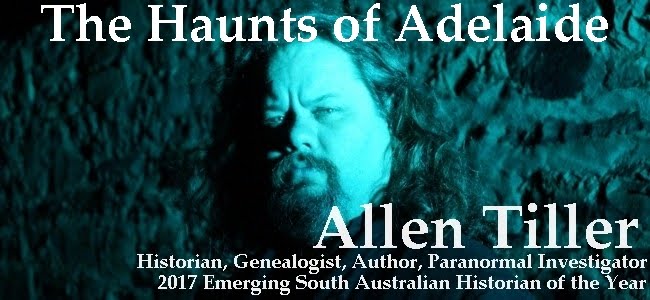Paranormal Research: National Library of Australia’s TROVE (Part 3) Referencing on Trove
Prior posts on this topic:
Paranormal Research: The Manning Index of South Australia
Paranormal Research: National Library of Australia’s TROVE (Part 1) – Basic Search
Paranormal Research: National Library of Australia’s TROVE (Part 2) - Advanced Search
It is essential that researchers and writer in the paranormal field reference their work. Not only does this stop criticism from potential sceptics, as you can show where ideas and events are sourced from, it also stops plagiarism. Plagiarism is already rife in the field, and the more we stop it, the less infighting we will have.
Another valid point, that I am very vocal about on social media, is referencing our writing, showing our legitimate sources lends credence and respect to the field. It shows those in the scientific and research fields that we are serious about finding the truth about whatever it is we are researching. That we are more than just pseudoscience.
So whether you are planning on writing a book or blog about ghosts, it is essential that you reference the materials you use in your research. It proves what you are talking about was reported widely. It proves you are not making the story up yourself, but it also proves you are not stealing the original work, word for word, or even worse, changing the story to fit your own narrative, as so many tour groups in this field are guilty of doing.
Referencing is a standard convention within the academic and professional research communities, which is designed to inform the reader of the sources of information used in a piece of written work.
There are several referencing systems in common use, with certain systems being preferred in different academic disciplines., my preferred styles are Chicago and Australian Harvard. I tend to lean more toward Chicago style now, and use extensive footnoting. (which we will get to in another blog post)
1. The “in-text reference”; a reference to a source of information placed within the body of the work.
In text Referencing Example: “Doyle write about looking for a Skeleton on Rundle Street. (The Register, 1921).”
2. The “reference list”; a list of all sources referred to in the work, located at the end of the work. (A slight variation is the Bibliography).
Luckily for us, Trove makes things a simple for referencing.
If we search a newspaper story on Trove. You will find on the left-hand side are several symbols. The first is an information symbol, this is where Trove cites the work for you. Most of the time the 3rd citation down is Harvard.
So, you can copy and paste, or write it down as is, and add it in your Reference List/Bibliography or in-text referencing:
(Harvard Example)
‘1921 'GHOSTS AND SKELETONS', The Register (Adelaide, SA : 1901 - 1929), 25 February, p. 3. , viewed 05 May 2017, http://nla.gov.au/nla.news-article55150338
Because of the layout of Blogger, I cannot add the content of this talk in its entirety in one blog post. This transcript was originally presented as an interactive video presentation at the City Library in Adelaide and does not transcribe well to this format.
© 2017 - Allen Tiller - originally presented by Allen Tiller as part of the 'Haunted Buildings in Adelaide' - Paranormal historian in residence project at the Adelaide City Libraries in conjunction with the City of Adelaide.
















